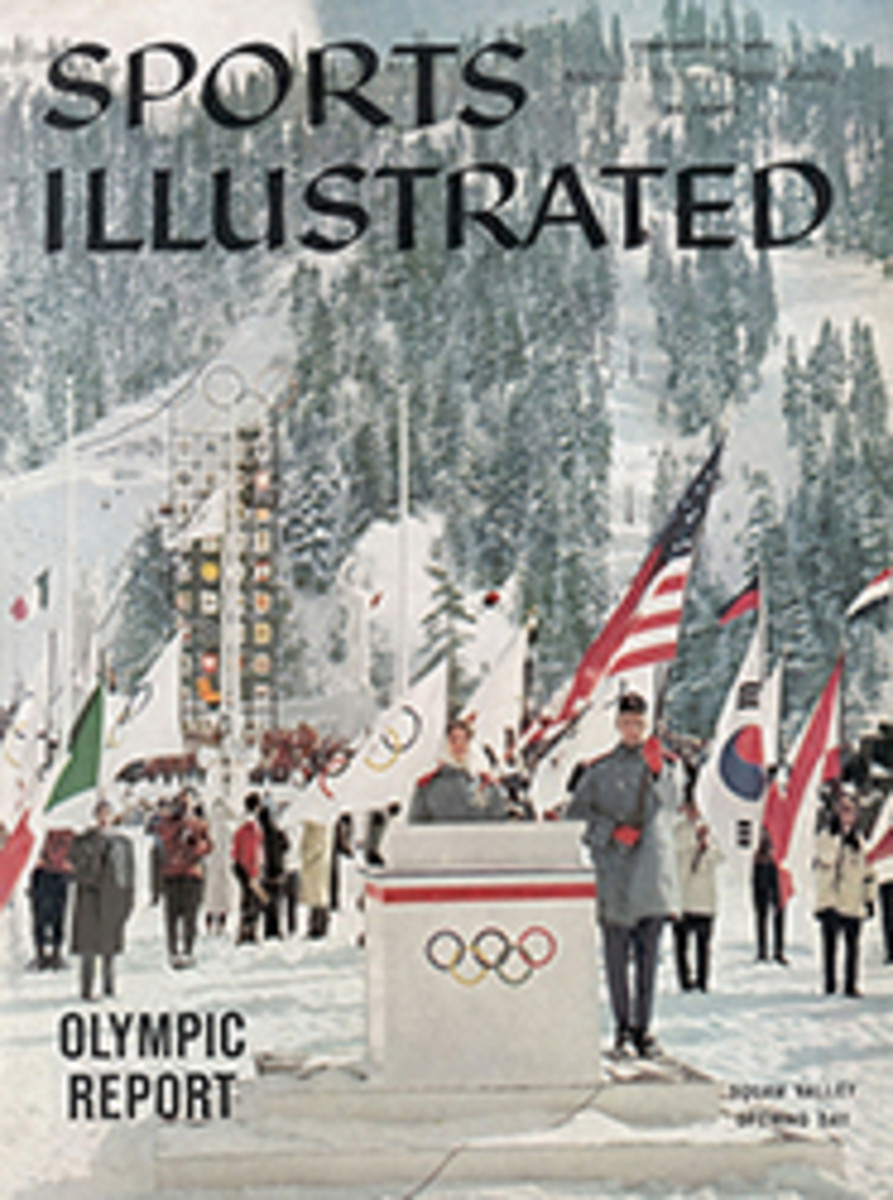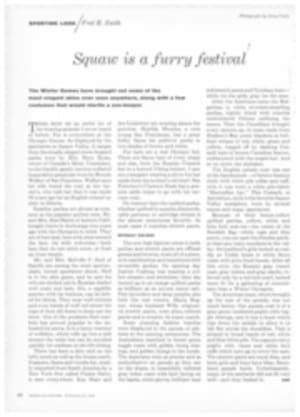
The $3,300,000 smile
The year was 1950. Walter O'Malley, the cool businessman-lawyer who had just taken over as director of the Brooklyn Dodgers baseball team, cast an appraising eye on his club's prospects. He decided they were not good. To be sure, in the next few years the Dodgers were to show the largest pretax and net-profit take in the business. Before a House subcommittee in 1957 O'Malley admitted that the Dodgers from 1952 to 1956 had made $1,860,744 after taxes.
But O'Malley knew the symptoms of business decline. His team was operating in a saturated TV market, in an outmoded place of business and under conditions which O'Malley—but few others—foresaw would deteriorate in the coming years. With a prescience given only to those destined for success, O'Malley moved the Dodgers to Los Angeles.
The results of his migration are now in. And they show that O'Malley has made more money in a single season than any other franchise holder in the history of baseball. The Los Angeles Dodgers can show a return on investment that even the most glamorous space-age stock might well envy. Moreover, there is no end in sight to his avenue of dividends.
O'Malley, of course, is not going to tell anybody how much money he has made out of his master move west. The economics of baseball traditionally have been a clandestine rite, interrupted only occasionally by the sudden sobbing of a burned board of directors. Often, such a performance is just a front-office version of the hidden-ball trick calculated to hoodwink the team's leading hitters into signing a contract somewhat below their net worth. But even the banjo hitters are warming up for a crack at O'Malley's bank roll after his 1959 season.
Let's make a very conservative estimate of the Dodgers' 1959 take. To begin with, a total of 2,071,045 paid their way into the Los Angeles Coliseum to watch the Dodgers in regular-season play. Their average ticket cost about $2.40, or a total of approximately $5 million. Concession profits gave the club an additional $384,016, and baseball novelties like hats, bats and pennants $15,000.
LOVELY RENT-FREE SERIES
The Dodgers paid no rent to the Coliseum for the World Series, O'Malley having convinced the Coliseum that the Series is historically a benefit for the players and the Commissioner of Baseball but not for the clubs. This is true except when the crowd level reaches 90,000 a day, as it did in the Coliseum. When that happens everybody makes money. The Dodgers made $335,140.16.
On the road last year Los Angeles reaped $356,094 from 1,294,889 admissions. Radio broadcasting rights brought in another $885,000, or about what the Dodgers received in Brooklyn for both radio and TV. (Nielsen, the rating people, report that the third Series game had the largest audience—24.3 million homes—ever to view a single broadcast, so O'Malley has a good argument for higher broadcasting fees in 1960.)
Thus, conservatively, O'Malley's income from all baseball sources last year was some $7 million. In their last pennant-winning year in Brooklyn, the Dodgers took in $3,880,824.
Expenses in 1959 for the Dodgers balance out about as follows: player payroll $465,000, second highest in the league; Coliseum rental $281,282; field maintenance and crew $395,000; front-office personnel $350,000; bonuses to new rookies (an investment in the future) $850,000; loss on minor league operations $300,000; visiting teams' share of gate $569,537; indemnification payment to the National League office and the Pacific Coast League $250,000; air transportation $110,000.
Dodger expenses for 1959 thus wound up in the area of $3,600,000. This is nearly a million and a half more than the expenses in Brooklyn in 1956, the last World Series year, when they were $2,216,175. However, Walter O'Malley and his jolly crew still had a net income before taxes of at least $3,300,000.
But the Dodgers' and O'Malley's windfall has not gone unnoticed in Los Angeles nor has it been universally cheered. One of the first results of the big year was that the Coliseum commission was wearing its old face when the wily Walter came forward to seek an "equitable" deal for the use of the Coliseum in 1960. The commissioners reminded O'Malley that he had signed his two-year lease with the clear understanding that should a third year be necessary he would have to sign on at the standard pre-Dodger-era rate. The Coliseum in 1960 will get 10% of the gross and all income from the concessions.
By last year's figures, this would come to $800,000, or an increase of $500,000. To O'Malley's credit, he put up only token resistance and quickly capitulated—even though, at 70-plus games a year, the Dodgers brought in seven times as much business at the Coliseum as football teams did.
It appears likely that the Dodgers will have the biggest National League player payroll in 1960. Gil Hodges and Duke Snider will again head the list with approximately $39,000 each. Wally Moon rises from $20,000 to $30,000. Don Drysdale goes up from $17,000 to $27,000. Charlie Neal will get $24,000, up from $19,000. Carl Furillo $25,000, Clem Labine $23,000, Jim Gilliam $22,000, and Roger Craig, $17,000, a raise doubling last year's $8,500. Catcher John Roseboro goes from $10,000 to $16,000. Larry Sherry gets a deserved 100% raise to $14,000, and Sandy Koufax' strikeouts merit his jump from $14,000 to $17,000. Bonus boys Frank Howard and Ron Fairly, who have already banked nearly $200,000 between them just to sign, will get standard $8,000 contracts but with provisos for premiums.
Off the field, the line is forming at the O'Malley pay window, too. Pained at the high cost of living in the Coliseum, O'Malley is more anxious than ever to complete his new stadium in Chavez Ravine. He has had to buy up at exorbitant prices 12 parcels of real estate to complete his acreage. One home site in the ravine was owned by an embittered son of a onetime British army officer. The son blamed his father's death from a heart attack to wrangles he had had over the land. The site was appraised at $9,000. His home was sold to the Dodgers at $150,000. Another parcel appraised at $15,510 cost the Dodgers $130,000.
When these costly bases have been safely touched, Walter O'Malley, living in baronial splendor in the pseudo-alpine fastness of Lake Arrowhead, 100 miles east and 5,000 feet up from Los Angeles, will start building his $8 million ravine stadium, the ownership of which the Dodgers will share with no one.
So just how are things with the Dodgers and O'Malley? Just fine, thank you, or rather, let O'Malley thank himself. He saw the gold in the West and, superlative businessman that he is, cornered a nice solid part of it.
PHOTO
SMILING O'MALLEY TOOK DODGERS WEST DESPITE PROFITABLE YEARS IN BROOKLYN

